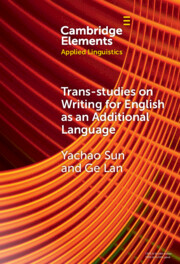Element contents
Trans-studies on Writing for English as an Additional Language
Published online by Cambridge University Press: 22 April 2024
Summary
Keywords
- Type
- Element
- Information
- Series: Elements in Applied LinguisticsOnline ISBN: 9781009336659Publisher: Cambridge University PressPrint publication: 31 May 2024



